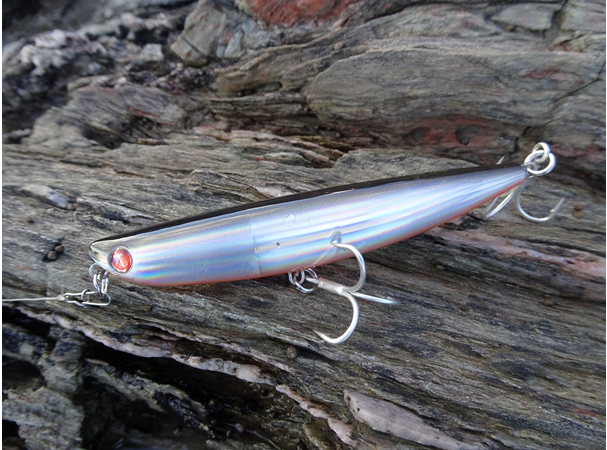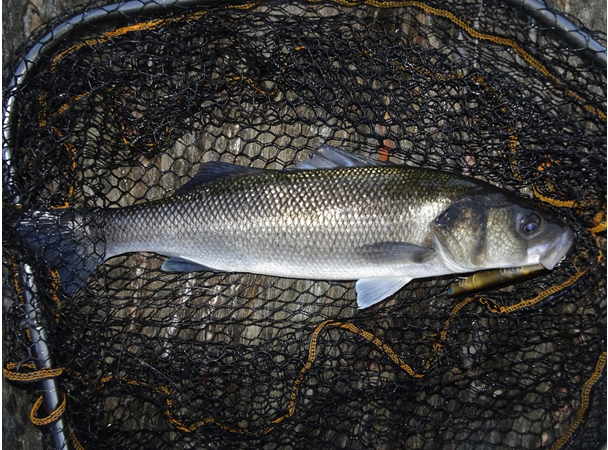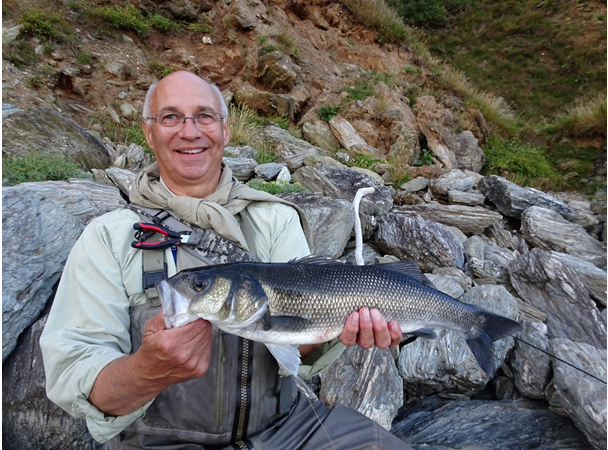Sea Spin Pro Q 120
Posted by Marc Cowling (South Devon Bass Guide) on 6th Jul 2019

We’re rapidly approaching that time of the season when surface bass lures will really start to come into their own -and for a variety of reasons...
As I’ve mentioned in previous articles and posts, the rising sea temperature around our coastline means that the bass’ metabolism will also increase, serving to transform those lethargic spawning spring fish into ravenous ‘eating machines’ that will happily follow and snap at anything that appears either disoriented or hapless. Moreover, around the UK all manner of immature ‘silvery fish’ should be flourishing close inshore now (especially following the last week’s heat wave) be it the sandeels, mullet and mackerel, with the sprat also imminent.
The more settled the weather, and the calmer and clearer the seas, the more likely it is that these bass prey items will shoal up - and when this occurs they are very often forced up into the surface layers for both the seabirds and the underwater predators to feast upon. All of this behaviour means that the bass become naturally ‘tuned’ into hitting items off the top as it were - which is when the bass lure angler needs to strike accordingly.
Personal favourite...
So whether you’re attempting to imitate small fry scattering or perhaps a larger wounded creature, one of the lures that I keep hidden away for such opportunities, and one that became a reliable bass catcher for me last season is the Sea Spin Pro Q 120. Measuring 120mm and weighing 27g, these robust and rather stocky surface ‘sliders’ where actually introduced to me by a client (Trevor) in early August 18, and they quickly became one of my personal favourites during the warmer months thereafter, until the onslaught of the autumn storms arrived.

A well proportioned surface slider, the Sea Spin Pro Q offers excellent value for money. Note the position of the attachment ring on the lure’s snout, as this assists the lure’s action and the angler to work the lure more effectively in rougher sea conditions.
So let’s take a look at Pro Q’s attributes: Firstly, they are cheap (at 12.95) in comparison to many similarly sized surface lures such as the Xorus Patchinko 125, Tackle House Vulture 120 and OSP Bent Minnow. Secondly, that thickset body and ‘nose up’ action (courtesy of the position of the attachment ring on the snout of these models) enables the lure to be particularly stable on the surface in choppy, but more especially swell situations - both of which being the types of conditions that these lures have excelled when fished either in a continuous walk-the-dog fashion or with a sporadic ‘spitting’ forward motion (as if I was working a popping lure) before being left to lie motionless.
Finally, their casting prowess can be exceptional – with a caveat... If you try to blast them, then you risk the lure ‘helicoptering.’ Therefore, my advice is to slow the cast down a little, and to feel that 27g behind you via the rod tip, and to place a nice curve in the blank - a technique that should see the lure glide effortlessly seawards nine times out of ten. To some, this may render the lure as inconsistent, but I am happy with those types of odds.
Options
I touched on how and when I prefer to use the Pro Q 120 (more turbulent sea conditions), but I have also caught bass on them when utilised in flat calm conditions by working them in a more restrained manner. By simply allowing the lure to ‘slither’ almost across the surface and gently zigzag via a soft tapping on the rod tip and a very slow staggered retrieve will cause the lure emit an enticing and very subtle wake for a lure that is relatively large and heavy. What’s more, there is a smaller version (the Pro Q 90) that only weighs 11g, that I imagine would be ideal in quiet shallow bays, muddy lagoons and creeks or when the bass are being a little more finicky.

A fantastic looking bass, that snared a darker-bellied Pro Q 120 in a turbulent sea, and in dull weather conditions.
In addition to the various options available in regards to their size and movement (for example, the way the angler can work or retrieve them) I also really like the selection of colours produced. The majority of the surface lures that I tend to use will either have a silver, orange/red, translucent or darker underbelly(the latter being a configuration that is arguably more visible when silhouetted against the sky from below)- all of which Sea Spin have thought of when designing the Pro Q.

A former client (Trevor), and the man who introduced me to these excellent lures. When he started to introduce a long ‘pause’ to his retrieve when utilising them on his local marks his catch rate increased significantly.
With a few days off between my guiding commitments during the next 10 days or so, and with the weather forecast leaning towards more settled and warm conditions I shall be breaking out the surface lures for sure!
See below to can browse the bass lures discussed:
